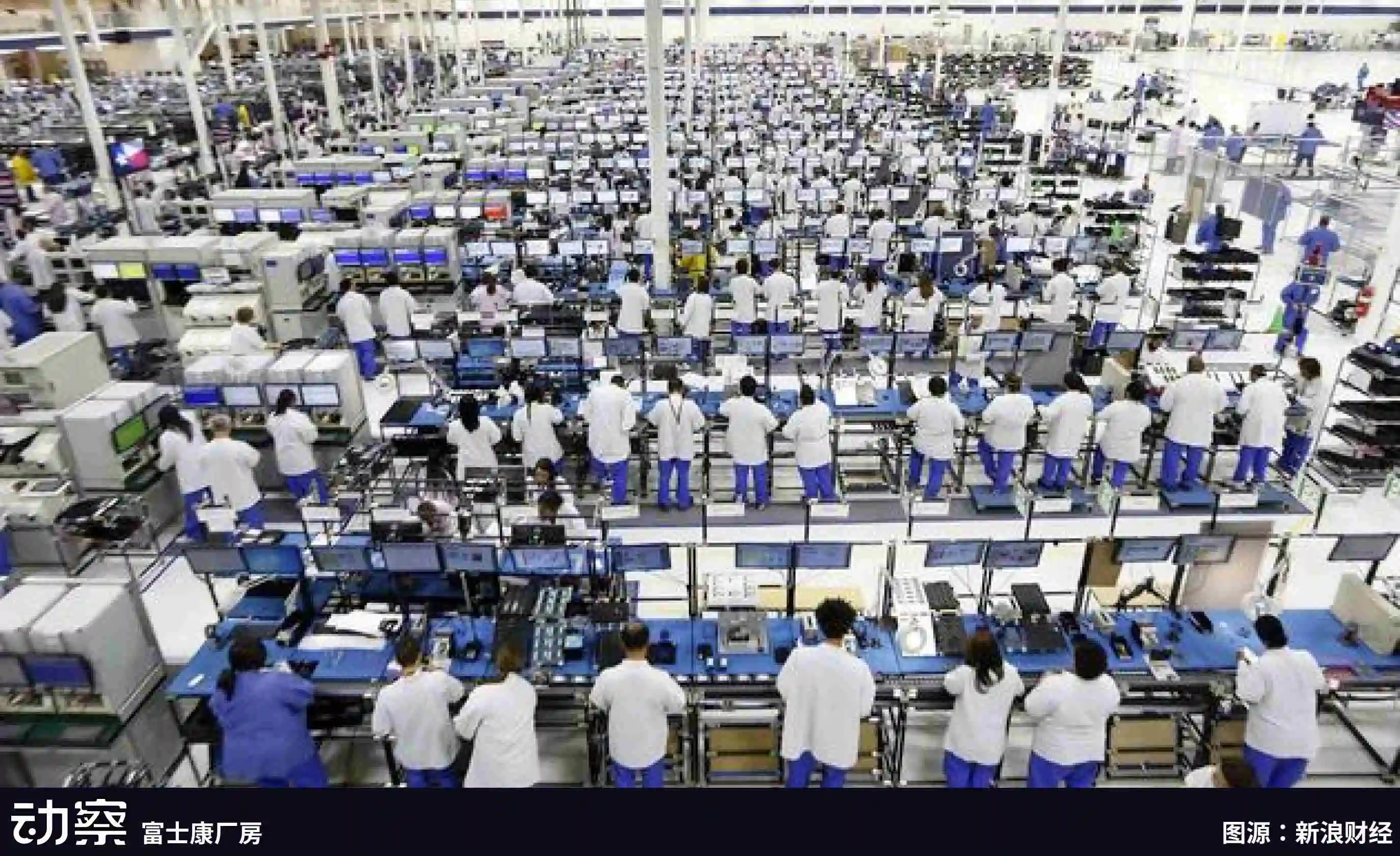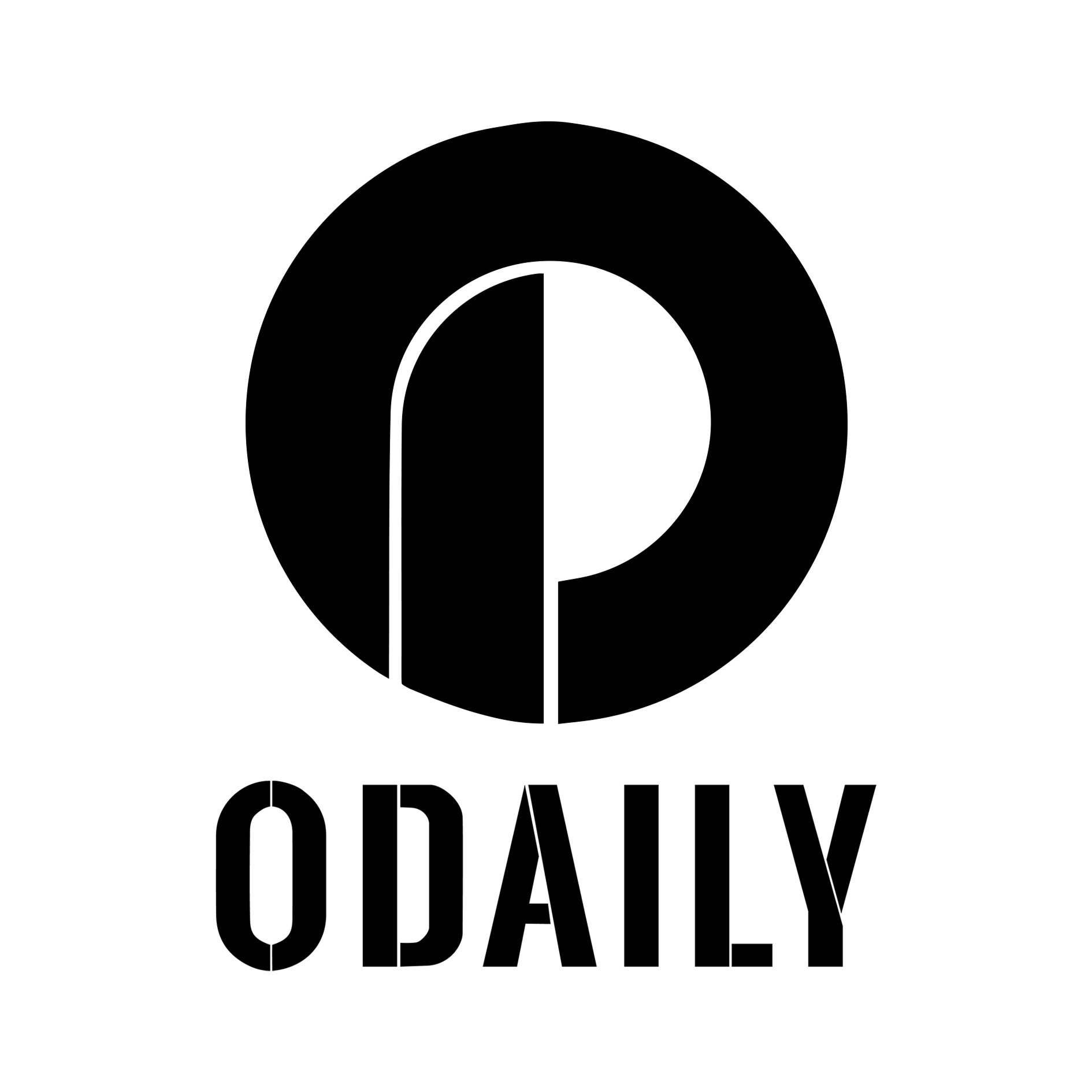Trillion stablecoins rely on "foundry" to land
Original title: "Foundries of Future Trillion Stablecoins"
The original author :Sleepy.txt
Bridge, a stablecoin issuance platform owned by Stripe, one of the world's largest online payment infrastructures, launched the native stablecoin MetaMask USD (mUSD) for MetaMask, a wallet application with more than 30 million crypto users.
Bridge is responsible for the full issuance process, from reserve custody and compliance audits to smart contract deployment, while MetaMask focuses on polishing the front-end product interface and user experience.
This cooperation model is one of the most representative trends in the current stablecoin industry, and more and more brands are choosing to outsource the complex issuance process of stablecoins to professional "foundries", just like Apple handed over the production of iPhones to Foxconn.
Since the birth of the iPhone, Foxconn has been taking on core production tasks almost constantly. Today, about 80% of the world's iPhones are assembled in China, and more than 70% of them come from Foxconn's factories. Zhengzhou Foxconn once accommodated more than 300,000 workers during the peak season, known as the "iPhone City".

Apple's cooperation with Foxconn is not a simple outsourcing relationship, but a typical case of modern manufacturing division of labor.
Apple focuses its resources on the user side, such as design, system experience, brand narrative and sales channels. Manufacturing does not constitute a differentiating advantage for it, but means huge capital expenditure and risk. Therefore, Apple never had its own factory, but chose to leave production to professional partners.
Foxconn has established core capabilities in these "non-core" links, building production lines from scratch, managing raw material procurement, process flow, inventory turnover and shipment rhythm, and continuously reducing manufacturing costs. It establishes a complete set of industrial processes in terms of supply chain stability, delivery reliability and capacity flexibility. For brand customers, this means the underlying guarantee of zero-friction expansion.
The logic of this model is division of labor and collaboration. Apple does not have to bear the fixed burden of factories and workers, and can avoid creating risks when the market fluctuates; Foxconn, on the other hand, relies on scale effects and multi-brand capacity utilization to extract overall profits from extremely low single profits. The brand focuses on creativity and consumer reach, and the foundry undertakes industrial efficiency and cost management, forming a win-win situation.
This is not just changing the smartphone industry. Since the 2010s, computers, televisions, home appliances and even automobiles have gradually moved towards the OEM model. Foxconn, Quanta, Wistron, Jabil and other manufacturers have become key nodes in the restructuring of the global manufacturing industry. Manufacturing is modularized and packaged into the ability to operate and sell at scale.
More than a decade later, this logic began to be transplanted to a seemingly unrelated field: stablecoins.
On the surface, issuing a stablecoin only needs to be minted on-chain. But to really make it work, the work involved is far more complex than the outside world thinks. Compliance framework, bank custody, smart contract deployment, security audit, multi-chain compatibility, account system access, and KYC module integration require long-term investment in financial strength and engineering capabilities.
We have written in the article "How much does it cost to issue a stablecoin? This cost structure is dismantled in detail: If an issuer starts from scratch, the initial investment is often in the millions, and most of them are incompressible rigid expenses. After launch, the annual operating cost may even reach tens of millions, covering various modules such as legal, auditing, operation and maintenance, account security and reserve management.
Today, some companies are beginning to package these complex processes into standardized services that provide plug-and-play solutions to banks, payment institutions, and brands. They may not necessarily appear in front of the stage themselves, but behind a stablecoin issuance, they can often be seen.
In the world of stablecoins, Foxconn has also begun to appear.
In the past, the"Foxconns" of the stablecoin world
wanted to issue a stablecoin, which almost meant playing three roles at the same time: financial institutions, technology companies, and compliance teams. The project team needs to negotiate with the custodian bank, build a cross-chain contract system, complete compliance audits, and even deal with licensing issues in different jurisdictions. For most companies, this is too high.
The emergence of the "foundry" model is to solve this problem. The so-called "stablecoin foundry" refers to an organization that specializes in providing stablecoin issuance, management, and operation services for other companies. They are not responsible for building an end-facing brand, but rather provide the complete set of infrastructure needed behind the scenes.
These companies are responsible for building a complete infrastructure from front-end wallets and KYC modules to back-end smart contracts, custody, and auditing. Customers only need to clarify which currency to issue and which markets to launch on, and other links can be completed by the foundry. Paxos played such a role when partnering with PayPal to issue PYUSD: custody US dollar reserves, responsible for on-chain issuance, and compliant docking, while PayPal only needs to display the "stablecoin" option in the product interface.
The core value of this model is reflected in three aspects.
The first is to reduce costs. If a financial institution wants to build a stablecoin system from scratch, the upfront investment can often be millions of dollars. Compliance licensing, technology research and development, security audits, and bank cooperation all need to be invested separately. By standardizing the process, foundries can reduce the marginal cost of a single customer to a much lower level than the self-built model.
The second is to shorten the time. The launch cycle of traditional financial products is often measured in "years", and if stablecoin projects take a completely self-developed path, it is likely to take 12-18 months to implement. The foundry model allows customers to launch products in a matter of months. The co-founders of Stably have publicly stated that their API access model allows a company to launch a white-label stablecoin in a matter of weeks.
The third is to transfer risks. The biggest challenge for stablecoins is not technology, but compliance and reserve management. The U.S. Office of the Comptroller of the Currency (OCC) and the New York State Department of Financial Services (NYDFS) have extremely strict regulatory requirements for custody and reserves. For most companies looking to test the waters, it's not realistic to take on full compliance responsibilities. Paxos was able to win over major customers such as PayPal and Nubank precisely because it holds a New York State trust license, which allows it to legally hold US dollar reserves and bear regulatory disclosure obligations.
Therefore, the emergence of stablecoin foundries has changed the entry threshold of the industry to a certain extent. The high upfront investment that only a few giants could afford can now be spun off, packaged, and sold to more financial or payment institutions in need.
1|Paxos: Make the process into a product, and make compliance into a business
Paxos' business direction is set very early. It does not emphasize branding, nor does it pursue market share, but builds capabilities around one thing: turning the issuance of stablecoins into a standardized process that others can choose to purchase.
Thestory begins in New York, where in 2015, the New York State Department of Financial Services (NYDFS) opened digital asset licenses, making Paxos one of the first licensed limited purpose trust companies. That license plate is not just symbolic, it means that Paxos can hold customer funds, operate blockchain networks, and perform asset settlements. This kind of qualification is not available to many companies in the United States.
In 2018, Paxos launched the USDP stablecoin, and the entire process is placed under the regulatory vision: reserves are placed in banks, audits are disclosed monthly, and minting and redemption mechanisms are written on-chain. Not many people have learned this approach because of the high cost of compliance and the lack of speed. But it does form a clear and controllable structure, breaking down the birth process of a stablecoin into several modules that can be standardized.
Later, instead of focusing on promoting its own coins, Paxos packaged this module into a service for others to use.
There are two of the most representative customers: Binance and PayPal.
BUSD is a stablecoin service provided by Paxos for Binance. Binance controls the brand and traffic, while Paxos assumes issuance, custody, and compliance responsibilities. This model worked for several years until 2023, when the NYDFS demanded that Paxos stop new minting, citing inadequate anti-money laundering reviews. After this incident, the outside world began to notice that BUSD was issued by Paxos behind it.
A few months later, PayPal launched PYUSD, and the issuer was still Paxos Trust Company. PayPal has users and a network, but it has no regulatory qualifications and does not plan to build it itself. Through Paxos, PYUSD can be legally and compliantly listed and enter the US market. This is one of the most representative demonstrations of Paxos' "foundry" capabilities.

its pattern is also being replicated overseas.
Paxos has obtained a major payment institution license from the Hong Kong Monetary Authority (MAS) in Singapore and has issued the stablecoin USDG based on this. This is the first time Paxos has completed the entire process outside of the United States. It also set up Paxos International in Abu Dhabi to do overseas business and launched the yield-bearing US dollar stablecoin USDL, using local licenses to avoid US regulation.
The purpose of this multi-jurisdictional structure is very straightforward: different customers and different markets need different compliance and landable issuance paths.
Paxos launched a stablecoin payment platform in 2024, began to undertake corporate collection and settlement business, and also participated in the construction of the Global Dollar Network, hoping to connect stablecoins in different brands and systems to facilitate clearing. It wants to provide a more complete back-office infrastructure.
But the closer you get to regulation, the easier it is to be picked by supervision. The NYDFS has named its lack of anti-money laundering due diligence in the BUSD project. Paxos was also fined and required to file a corrective action. Although this is not a fatal blow, it shows that Paxos' path is not destined to be lightweight, and there is no room for ambiguity. It can only continue to thicken compliance and draw clear boundaries. It turns every regulatory requirement and every safety link into a part of the product process. When others use it, they only need to hang the brand to issue stablecoins. Paxos takes over the rest. This is its positioning, and it is also a business method that is deeply bound to technology and regulation.
2|Bridge: The addition of Bridge, a heavyweight foundry brought by Stripe
, has made the stablecoin foundry track a real giant appear for the first time.
It was acquired in February 2025 by Stripe, one of the world's largest online payment infrastructures, processing hundreds of millions of transactions daily and serving millions of merchants. Compliance, risk control, and global operations, these paths that Stripe has already run, are now ported on-chain through Bridge.
 – >
– >
Bridge is positioned directly to provide complete stablecoin issuance capabilities for businesses and financial institutions. It is not simply technical outsourcing, but more like modularizing the mature links of the traditional payment industry and encapsulating them into standardized services. Reserve hosting, compliance audits, and contract deployment are all managed by Bridge, and customers only need to call the interface to access the stablecoin function in the front-end product.
MetaMask's collaboration case is the most illustrative. As one of the world's largest Web 3 wallets, it has over 30 million users but lacks financial licenses and qualifications for reserve management. With Bridge, MetaMask can launch mUSD in a matter of months, rather than spending years building a compliance and financial system.
The business model chosen by Bridge is platform-based. It is not tailored to a single customer, but to build a standardized distribution platform. The logic is consistent with Stripe's approach to payments, lowering the barrier to entry through APIs and allowing customers to focus on their core business. Back then, countless e-commerce and applications were connected to credit card payments, and now companies can issue stablecoins in a similar way.
Bridge's strength comes from the parent company. Stripe already has a global network of compliance partnerships, which has made it easy for Bridge to enter new markets. At the same time, Stripe's built-in merchant network also constitutes a natural potential customer base. For those businesses that want to try their hand at the stablecoin business but lack on-chain technology or financial qualifications, Bridge offers a ready-made solution.
But limitations also exist. As a subsidiary of a traditional payment company, Bridge may be more conservative than crypto-native enterprises and may not iterate fast enough. In the crypto community, Stripe's brand influence is also far less than in the mainstream business world.
Bridge's market is more geared towards traditional financial and corporate clients. MetaMask's choice illustrates this, and it requires a trusted financial partner, not just a technology provider.
The entry of Bridge means that the stablecoin foundry business is being paid attention to by traditional finance. As more players with similar backgrounds join, the competition in this track will be more intense, but it will also promote the industry towards maturity and standardization.
3|Stably: Building a lightweight production line for the mid-market
Stably was founded in 2018 and is headquartered in Seattle. Like many similar companies, it started with the issuance of its own stablecoin, Stably USD. But the market quickly proved that this road was difficult to break through. Competing with Tether and USDC had little chance of winning, so Stably turned to another blank space: helping others issue it.
Its business is directly written on the homepage of the official website "White Label Stablecoin Issuance Platform". This means that customers do not need a R&D team or write their own contracts, as long as they call through the API, they can issue a stablecoin with their own name within a few weeks. The choice of chain, the name of the coin, and the brand symbol are all decided by the customer, and Stably is responsible for connecting the backend system.

This logic determines the difference between it and Paxos. Paxos' path is compliant, asset-heavy, and all reserves must go into a trust account, which is managed by itself, and the interest goes to Paxos. Stably is much lighter. The reserve remains in the customer's bank account, as long as it meets the escrow criteria.
Stably does not touch funds or escrow, and the income comes from technical and operational service fees. In this way, the reserve income is retained by the customer, and the foundry only receives "wages".
For many small and medium-sized institutions, this is the key. The interest on the reserve is often much higher than the issuance income itself. If it is handed over to a major manufacturer such as Paxos, it is equivalent to giving away this part of the profits. Stable's solution means that customers can retain interest and go live quickly at a lower cost.
Speed is another of its selling points. Stably promises to go live within 2 months and has demonstrated an actual deployment cycle of 4~6 weeks in multiple cases. In contrast, Paxos tends to take months or even longer. For payment companies or local banks that only want to do regional pilots first, the difference in pace means the difference in cost.
Stable's customer persona is significantly different from Paxos's. Paxos serves global platforms such as PayPal and Nubank. Staly's target market is the mid-range: regional financial institutions, cross-border payment providers, Web 3 wallet service providers, and e-commerce payment interface companies. They don't need top-level compliance, and they don't plan to cover the world right away, as long as they can run through in their own scenarios.
From a technical implementation point of view, Stably makes the compatibility of chains wider. ETH, Polygon, BNB, Arbitrum, Base are all in the support range. It is constantly expanding its network to ensure that customers can have ready-made interfaces on any chain they want to send to, and it is laying out a lightweight, replicable template network.
The limitations are also obvious. Stably lacks major customer endorsements, no strong regulatory qualifications, and no sufficient brand voice. It can attract mainly customers who are sensitive to speed and revenue, but do not have as high compliance requirements. This means that it is difficult to take on the really large banks and payment giants, but it still has its own living space in the middle market.
It is widely believed in the industry that potential issuers of stablecoins are more than just giants. In addition to names like PayPal and Binance, there are a large number of second-tier payment institutions, regional banks, and B2B platforms that may not develop their own blockchain systems but need stablecoins to run their business. Stably exists to provide these customers with a path that is fast enough, cheap enough, and willing to take their own risks.
If the value of Paxos is to build heavy-duty compliant production lines, then Stably is about proving that there is a need for a different type of system that is not the most secure and standardized, but a shortcut to issuance that runs through with a low barrier to entry.
4|Agora: The story of Agora, a lightweight stablecoin issuance platform that emerged from Wall Street
,cannot be avoided by its founder, Nick van Eck. Behind this name is the family background of VanEck, a world-renowned asset management company. VanEck manages a large scale of ETFs and funds and has a strong position in traditional financial markets for a long time. Nick came out of it and entered the crypto space with traditional financial resources, founding Agora.
 –
–
> the beginning, Agora received support from Paradigm, a top venture capitalist. Paradigm is one of the most active crypto funds in the industry, having bet on projects such as Coinbase, Uniswap, Blur, and more. This investment signal quickly made the market pay attention to Agora, which has both Wall Street family resources and the blessing of Silicon Valley crypto capital.
What Agora wants to solve is not the pain points of a single institution, but the entry threshold of the entire industry. The vision it proposes is straightforward: to make issuing stablecoins as easy as registering a domain name. For most enterprises, applying for licenses, building compliance architectures, and developing smart contracts on their own means high capital and time costs. Agora is a plug-and-play white-label stablecoin issuance platform.
Customers only need to decide on the currency, brand, and usage scenario, and the rest of the modules are already packaged: account system, reserve custody interface, contract deployment and redemption logic, and information disclosure process. Agora is responsible for connecting these links, allowing customers to quickly generate a stablecoin like opening a SaaS account.
Compared to Paxos' heavy compliance route, Agora has a lighter path and tries to make stablecoin issuance a standardized service. It emphasizes not the advantages of license plates, but the lowering of the experience threshold. For potential customers, the advantage is that the launch is fast and the cost is low, and the risk and compliance part is covered by Agora's backend.
This type of model is naturally attractive. There are a large number of small and medium-sized payment companies, regional banks, and even e-commerce platforms in the market, which have a demand for stablecoins but cannot build their own systems. Agora provides interfaces that make these potential customers possible.
But there is still a long way between vision and reality. First of all, how to implement compliance is still the key. Stablecoins cannot legally exist based solely on the logic of registering a domain name. Regulatory requirements vary greatly from market to market, and Agora needs to meet both legal and financial requirements in multiple places to truly replicate.
Secondly, it does not have a large-scale customer case in the industry, and Paradigm's investment and Nick van Eck's surname are more of a potential endorsement.
In the track that Paxos, Stably, and BitGo have already established, Agora is like a new challenger. It does not emphasize secure hosting or accumulate license barriers, but tries to use a set of minimalist interfaces to make issuance a public service. Whether it can run through remains to be verified by time. But from a vision point to another possibility in the stablecoin industry, the issuance is a standardized business like domain name registration.
The next stop of stablecoin "foundry"
The stablecoin foundry model is still in its early stages, but it has shown a trend that when issuance becomes an outsourcing capability, the market's imagination will not only stop at the issuance itself, but will extend to more commercial applications.
Cross-border payment is the most direct scenario. Today, most cross-border transactions around the world still rely on the SWIFT system. It's slow, costly, and can't be done 24 hours a day. Even between large banks, it can take several days to clear funds.
The emergence of stablecoins offers a faster alternative. Through the standard interface provided by the foundry, regional banks or payment companies can access the stablecoin settlement network in a short period of time, allowing corporate customers to make cross-border remittances real-time. This means that the financial infrastructure that used to belong to giants may be opened up with a lower threshold.
Another potential direction is corporate capital management. For most enterprises, the flow and management efficiency of funds on the account has long been underestimated. If stablecoins can be embedded in corporate cash pools, they can bring new tools to supply chain finance, cross-border trade, and daily payments.
For example, companies can use stablecoins to transfer funds between different subsidiaries, reducing waiting periods and making the status of funds more transparent. The value of the foundry model is that it allows small and medium-sized banks and B2B platforms to provide this service faster without building a system from scratch.
Market opportunities are also changing. In the past few years, stablecoins have been mainly experiments with crypto-native companies. But as regulations become clearer, traditional financial institutions are getting involved. Banks, clearing networks, and regional financial platforms have begun to try to embed stablecoins in their systems.
For them, the risk of self-construction is too high, and the compliance modules and managed interfaces provided by foundries happen to be the easiest way to get in. Once such customers enter the market, the scale and usage scenarios of stablecoins will be rapidly amplified.
From a technical point of view, cross-chain interoperability is an issue that must be addressed in the coming years. Today's stablecoins are still scattered across different blockchains and are not compatible with each other. For end users, this means trouble, the same stablecoin can be two versions on Ethereum and BNB Chain.
Foundries are trying to make cross-chain transfers and liquidations standard processes, so that assets on different chains can flow seamlessly. If this layer is opened, the liquidity and application scope of stablecoins will be qualitatively improved.
Business models will evolve as well. At present, most foundries are still in the customization stage, and one customer corresponds to a set of solutions. However, with the increase in demand, standardized products will gradually replace high-cost customized services. Just like cloud computing started as a hosted and privatized solution, and then there was a one-click SaaS platform. Stablecoin issuance will follow a similar trajectory, transitioning from high-threshold project cooperation to low-threshold productized calls. The lower threshold means more potential customers can enter.
In other words, the future stablecoin foundry will not only help others issue it, but gradually build a global capital network. Its ultimate point of competition is not only compliance and custody capabilities, but also who can embed stablecoins into the real business chain faster and at a lower cost.
Conclusion
Foxconn did not design the iPhone, but it made it possible to make it popular worldwide. The role of stablecoin foundries is similar. They don't seek to build an independent brand, but do the hardest work in the background, pulling a stablecoin from concept to reality.
In recent years, the threshold for issuing stablecoins has been raised. Regulatory requirements are becoming more and more detailed, and there are more and more compliance links: license application, reserve custody, cross-border disclosure, smart contract deployment and audit...... Any link can stop the project. For most institutions, a direct end means tens of millions of dollars in budgets, a year or more in lead-up periods, and a policy environment that can change at any time. The significance of foundries is to turn these burdens into optional services.
This is why PayPal chose Paxos, Metamask partnered with Bridge, and companies like Agora began to offer white-label stablecoin issuance solutions. Their logic is the same as Foxconn's, breaking down complex processes into modules that can be reused through standardization and scale. Customers only need to define the market and brand, and the contract factory does the rest.
With the gradual implementation of regulation, this track is gaining clearer market boundaries. The GENIUS Act in the United States and the stablecoin licensing system in Hong Kong are both promoting "stablecoin issuance" out of the gray area and into the institutionalized stage. Once the rules are clear, demand will grow faster. Whether it's a payment company packaging dollars into on-chain assets or an emerging market bank trying to launch regional stablecoins, it could be the next batch of customers.
These "Foxconn factories of stablecoins" are becoming the invisible infrastructure underlying finance. They master compliance templates, auditing standards, cross-chain tools, and control the path of digital assets into the real world. Just like Foxconn has built an invisible hardware supply chain, stablecoin foundries are also building a production line belonging to digital finance.
Original link
